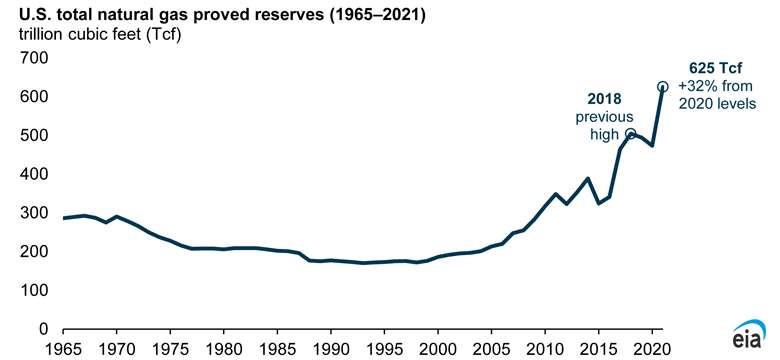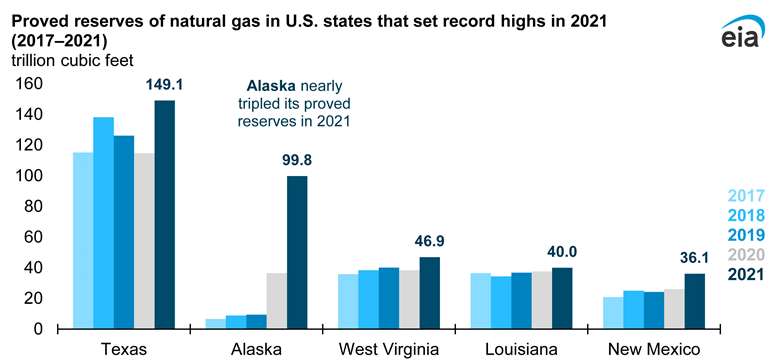
Proved reserves of natural gas in the United States grew to a new record of 625.4 trillion cubic feet (Tcf) in 2021, the latest year in which full statistics are available.
A recent report from the U.S. Energy Information Administration indicates that proved reserves increased 32% from 2020.
The report, Proved Reserves of Crude Oil and Natural Gas in the United States, Year-End 2021, states that proved reserves in the U.S. had previously decreased 4% in 2020 as a response to prices that fell with decreased consumption during the first year of the COVID-19 pandemic.
At year-end 2021, however, five of the eight states with the most proved reserves of natural gas each reported new record volumes, driving the growth nationally.
Proved reserves are operator estimates of the volumes of oil and natural gas that geological and engineering data demonstrate with reasonable certainty to be recoverable in future years from known reservoirs under existing economic and operating conditions.
The phrase “under existing economic and operating conditions” includes the price of gas, which heavily affect estimates of proved reserves. The wholesale spot price for natural gas at the U.S. benchmark Henry Hub in Louisiana averaged $3.89 per million British thermal units in 2021, almost doubling from 2020, according to data from Refinitiv.
Proved reserves in Alaska increased the most in 2021, up 63 Tcf, or nearly triple the state’s total in 2020. The proved reserves located in Alaska had already quadrupled in 2020 from 9.4 Tcf to 36.5 Tcf due to development of the Alaska LNG Project and its Mainline Pipeline connecting the North Slope to LNG facilities in the southern Alaska Cook Inlet Region. Large volumes of previously stranded Alaskan natural gas resources are now considered proved reserves.
